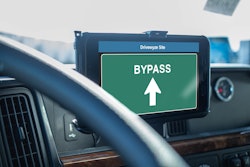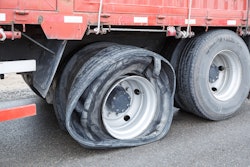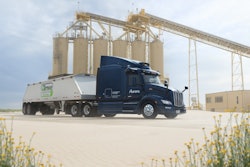“I hate Dallas!”
I cannot tell you how many times I heard that statement – more like an expletive – come from my mother back when she was a trucker. Had the metro had a signal priority program back then, she may not have disliked driving through that area in a big rig so much.
The CCJ reported last year on the North Central Texas Council of Governments’ (NCTCOG) efforts to enhance safety, mobility, efficiency and air quality associated with freight movements in the Dallas-Fort Worth region. NCTCOG recently announced partnerships with the cities of Arlington, Carrollton, Fort Worth, Garland, Grand Prairie and McKinney, as well as Dallas Fort Worth International Airport. They will deploy the Freight Signal Optimization Program across more than 500 traffic signals in their jurisdictions to help trucks move more efficiently through some of the region’s key freight corridors, improving traffic flow by eliminating stops at traffic lights simply by extending the time the light remains green.
Several cities with higher populations have implemented signal priority systems for their local transportation authority’s public bus lines. A project manager at Kimley-Horn – the planning and design firm selected by NCTCOG to identify the 500 traffic signals – previously told the CCJ they thought this was the first program in the U.S. to use this type of system for freight.
According to NCTCOG, for every 5,000 freight stops that are eliminated at traffic lights each day, fleets can save 3,800 minutes in travel time, $1,500 in fuel and operational costs, 4 miles per gallon in fuel efficiency and 1,300 kilograms of emissions.
And to top it off, the service is free. The Freight Priority mobile app is now available to download from the app store and directly from the Freight Priority website.
Prior to CCJ, I covered transportation for a business publication in one of Alabama’s largest cities. During my time at that publication, that city had been working on implementing signal priority for its bus system. I thought it was cool then, and I think it’s even cooler to implement such a program for freight.
I would like to see other big metro areas – especially in California with all its environmental policies – follow NCTCOG with similar programs. NCTCOG has done a lot of groundwork and discovery that it can share with other city, county and metro governments to help them jumpstart such a program.
Trucking companies and state trucking associations should investigate this and determine if it’s worth advocating for in the high-traffic areas they travel through. Take the idea to local governments. They, too, are trying to reduce emissions, and this system requires no new equipment in the roadway or in freight vehicles.
You can read more details from our previous coverage here: Texas-based project would give freight trucks priority at red lights.














